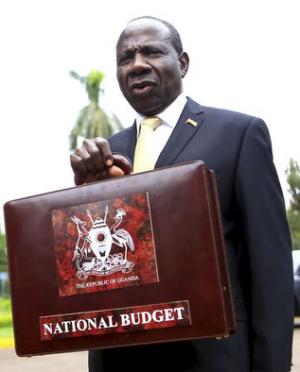By Julius Kapwepwe et al
The debt stock, service, rate of acquisition, and many other aspects threaten to raise the bitter experiences of debt burden that heavily undermined service delivery, growth and eradication of poverty.
The current conditions do not mirror what led to debt forgiveness under Highly Indebted Poor Countries (HIPC) and Multilateral Debt Relief Initiative (MDRI).
Accordingly, countries like Uganda have to be quite realistic in both acquisition and use of debt. When a government runs deficits for a long time, it builds up a stock of debt, which affects the economy’s output and wealth that are dependent of the available stock of capital. Since deficits reduce investments they generate a slower growth rate of capital stock. The economy’s capacity to produce goods and services is therefore, reduced even further.
Changing debt structure
The changing structure of the debt, whereby the domestic, short-term and non-concessional debt is dominating the portfolio, should be a concern. Already, the current structure shows that nearly 85 per cent of the debt service is on non-concessional domestic debt. Prudent debt management for sustainability demands that interest rates are far below the real economic growth rate.
Uganda has an average growth rate of less than 6 per cent over the last decade, from 2005, yet the weighted interest rate on its debt profile, given the increase in domestic debt, is skewed above 10 per cent.
Uganda’s past debt was more sustainable when the country was still committed to acquiring concessional debt, and evidence shows that the debt is still highly sensitive to non-concessional debt. In this regard, the government should not only be concerned about the debt to GDP ratio but also on the structure in terms of what portion of the debt portfolio is concessional or otherwise.
Disaggregation between external and domestic
The structure of the debt in terms of disaggregation between external and domestic as well as time to maturity raises concerns given the increasing volume of domestic short-to medium-term debt. For purposes of debt sustainability, it is often better to have a larger component of long-term debt that offers less stress on the economy in terms of repayment of both interest and the principle.
Uganda’s external debt stock amounted to US$ 87,389,458,000 between 1970 and 2014 with 26 per cent Grants
and the rest as Loans. Multilateral Donors have contributed 77 per cent of the total debt stock- with World Bank’s IBRD and IDA credit windows having constituted USD 49,936,615,000 (57 per cent). Over 50 per cent of that total External debt has been incurred by Uganda over the last 14 years (2001 to 2014).
Domestic debt costing
Not only is domestic debt costing the country much more, it is also growing very fast. In the last two financial years, when the government officially introduced domestic borrowing as a form of budget financing, borrowing through government/ treasury bonds has amounted to Shs3,161 billion (4 per cent of GDP).
A total of Shs1, 775 billion was borrowed in 2013/14 and Shs1,386 billion in 2014/15. An additional Shs1,384 billion is due to be borrowed in 2015/16, which will raise the portion of domestic debt from issuance of treasury bonds to Shs4,545 billion or 6.1 per cent of GDP in just three years. Going forward, as the proportion of domestic debt increases, debt sustainability will become a serious concern for the country.
Much as the Government recognizes the need to maintain a large component of debt under concessional terms, it seems to disregard its importance. Government has indicated that, over the medium-term, more non-concessional borrowing is going to increase and will dominate in the long-term due to the need to scale -up public investments.
The government needs to fully respond and implement the recommendation that it should define the acceptable level of non-concessional borrowing.
This article was compiled by analysts from Uganda Debt Network (UDN)







